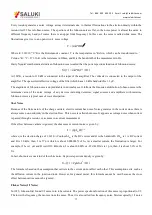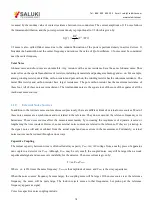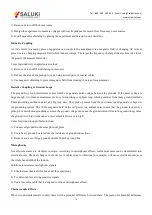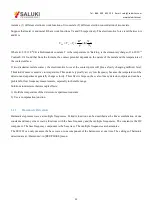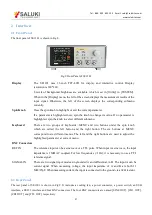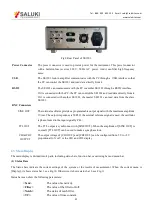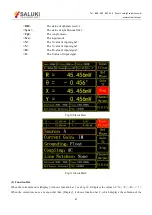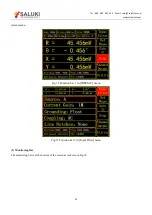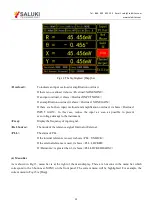
Tel: 886. 909 602 109 Email: sales@salukitec.com
www.salukitec.com
11
Another advantage of digital filtering is to do synchronous filtering. Even if the input signal has no noise, the PSD output
always contains a component at 2F (sum frequency of the signal and the reference) whose amplitude may exceed the
difference frequency component that we want. At low frequencies, increasing the time constant can attenuate the 2F
component.
In SE1201, synchronous filters are available at detection frequencies below 200 Hz. At higher frequencies, the filters are
not required because the 2F component is easily removed without using long time constants. The output of the
synchronous filter is followed by two more stages of normal filters. This combination of filters can eliminate the
harmonics of the reference signal and attenuate other noise signals.
Long Time Constants
Time constants above 100s are difficult to accomplish by using analog filters. This is simply because the capacitors
required for the RC filters are prohibitively large in value and size. Why would you use such a long time constant?
Sometimes you have no choice. If the reference is below 1 Hz with a lot of noise at low frequency, the PSD output will
contain many low frequency components. Nevertheless, the synchronous filter only filters out the harmonic component of
the reference frequency, and the followed filters filter the noise.
The SE1201 provides time constants as long as 3000s when the reference frequency is below 200 Hz, which can satisfy
most requirements of measurements.
DC Output Gain
How big is the DC output from the PSD? It depends on the dynamic reserve. With a 60 dB dynamic reserve, a noise signal
can be 1000 times (60 dB) greater than a full scale signal. At the PSD, the noise cannot exceed the input range of PSD.
For example, in an analog lock-in, the PSD input range might be 5 V. With 60 dB dynamic reserves, the signal will be
only 5 mV at the PSD input. The PSD typically has no gain so the DC output from the PSD will only be a few millivolts.
Even if the PSD had no DC output errors, amplifying this millivolt signal up to 10 V is error prone. An offset as small as 1
mV will appear as 1 V at the output. This is one of the reasons why analog lock-in does not perform well at high dynamic
reserve.
The digital lock-in does not have an analog DC amplifier, and has no DC output offset. Likewise, the digital DC amplifier
has no input offset. The output of the digital DC amplifier is simply the product of the input signal and the required gain.
This allows the SE1201 to operate with 100 dB of dynamic reserve without any outputs offset or zero drift.
1.6 DC Outputs and Scaling
The SE1201 has Channel 1 and Channel 2 outputs (CH1 and CH2) on the front panel.
CH1 and CH2 Outputs and Display
The output range of CH1 and CH2 is from
±
5V.
The output signal is proportional to the value of the test signal and the setting scale. Otherwise, the SE1201 shows the

















